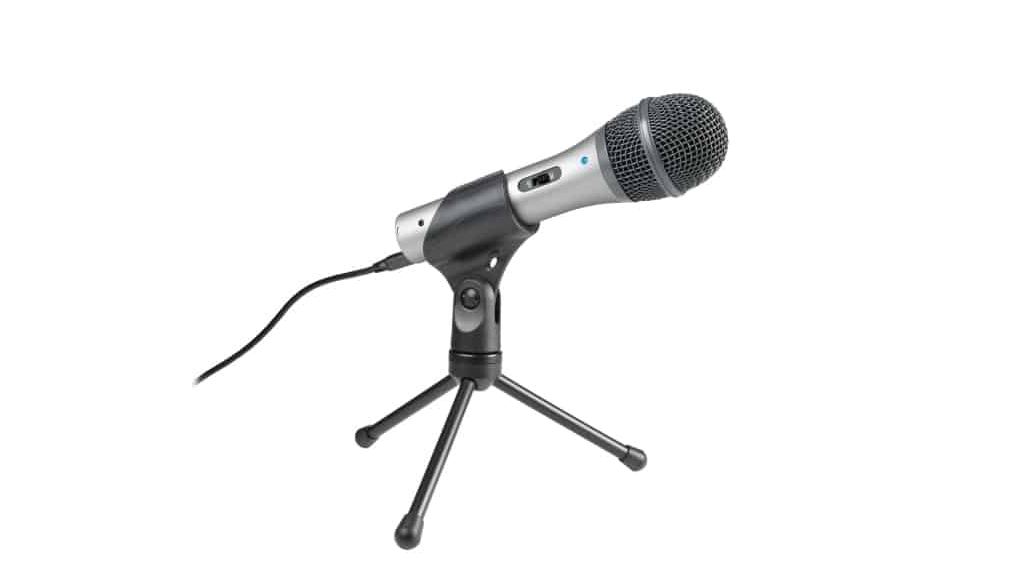There’s a secret to turning your webinars from “web-uh-nar” to “web-in-ar.” 🚀
Yeah, as someone who’s been in the webinar industry for nearly a decade, I can tell you that the real secret is mastering webinar best practices, which can help you get good results.
In fact, it’s not just about what you present but how you create an interactive, dynamic experience that holds attention from start to finish.
In this blog, we’ll explore the best practices for hosting a webinar in every phase to transform even passive viewers into active attendees.
Let’s dive in.
Webinar Best Practices for Every Phase
Let’s understand the best practices for webinars in detail, exploring each essential phase to help you create standout, engaging webinars.
From planning and promotion to live engagement and post-event follow-up, we’ll cover all the steps that ensure your webinar not only runs smoothly but leaves a lasting impression.
1. Planning Phase
The planning phase is foundational to any successful webinar. Here, you define the purpose, objectives, audience, and key topics. This phase also involves scheduling, team coordination, and selecting the right tools.
Thorough planning sets the tone for the entire webinar, ensuring alignment with audience needs and business goals. It’s also a time to assess resources, identify speakers, and allocate roles.
Best Practices:
- Set Clear, Measurable Objectives: Define specific goals like the number of attendees, engagement level, or lead generation targets. For example, you might aim to convert 20% of attendees into qualified leads.
- Understand Your Audience: Research audience pain points, interests, and demographics. This helps in tailoring content that resonates and adds value, such as creating industry-specific insights for B2B clients.
- Choose an Optimal Date and Time: Research your target audience’s time zones and availability to maximize attendance. Avoid scheduling during holidays, major industry events, or inconvenient hours.
- Select the Right Webinar Platform: Pick a webinar platform that fits your needs in terms of audience size, functionality, and integration with other tools (like CRM and email). Compare features, pricing, and ease of use.
- Assemble a Strong Team: Identify team roles such as host, moderator, speaker(s), and technical support. Assign specific tasks to avoid confusion during the event.
| Pro Tip: Use a project management tool like ProProfs Project to organize tasks, set deadlines, and keep track of progress. This ensures that each part of the planning process stays on schedule. |
2. Content Development Phase
Content development is the creative backbone of webinar best practices. In this phase, you create the core presentation, design visuals, and plan interactive elements like Q&A sessions, polls, and quizzes.

The goal is to build a coherent narrative that educates, informs, or entertains, depending on your objectives.
Best Practices:
- Outline the Presentation Structure: Divide the content into sections with a clear beginning, middle, and end. Consider adding a teaser to grab attention, core content to provide value, and a conclusion to recap key points.
- Use Engaging Visuals: Integrate high-quality visuals such as images, infographics, and short video clips. This keeps the audience visually engaged and aids understanding.
- Plan for Interaction: Add polls, surveys, and Q&A breaks to keep participants engaged. Interactive elements provide insights into audience interests and help sustain attention.
- Create a Script or Talking Points: Even if you plan to speak naturally, a script or bullet points will keep you on track and cover all points without going off-topic.
- Rehearse with a Test Audience: Gather feedback from a small group of peers or stakeholders to fine-tune the presentation and identify any confusing sections.
| Pro Tip: Keep slides uncluttered and use bullet points or short phrases. A simple 10-20-30 rule (10 slides, 20 minutes, 30-point font) can guide you to keep content concise and impactful. |
3. Promotion Phase
In the promotion phase, your goal is to generate awareness and drive registrations. An effective promotion strategy is an essential part of the webinar practices. It involves targeting the right audience and using multiple channels, such as email, social media, partnerships, and even paid advertising, to maximize reach.
Crafting an engaging registration page and building anticipation are also key elements.
Best Practices:
- Craft a Compelling Value Proposition: Clearly articulate why the audience should attend. Highlight the benefits, unique insights, or industry expertise they will gain.
- Use Multi-Channel Marketing: Promote the webinar on social media, email newsletters, and partner networks to reach a wider audience. Each channel should have customized messaging to appeal to its specific audience.
- Leverage Influencers or Guest Speakers: If your webinar includes industry experts, asking them to share promotional posts with their followers is one of the best webinar practices. This expands your reach and adds credibility.
- Send Reminders: Send a series of reminder emails to keep registrants engaged. Typical timelines include a one-week, one-day, and one-hour reminder before the webinar starts.
- Optimize the Registration Page: Make it visually appealing and include all relevant details like date, time, topics, and speaker bios. Adding testimonials or past webinar highlights can boost registrations.
| Pro Tip: Create a unique hashtag for the event and use it consistently across promotional posts. This helps to create a community feel and allows attendees to engage on social media before, during, and after the webinar. |
4. Technical Testing Phase
The technical testing phase ensures a smooth and glitch-free experience for participants. Testing every technical element—platform, audio, video, screen sharing, and interactive features—is essential to avoid disruptions.
This phase includes checking webinar equipment and internet stability and running mock webinars to address any issues beforehand.

Best Practices:
- Test Equipment Thoroughly: Ensure microphones, cameras, and lighting are of high quality and function correctly. Adjust audio settings for clear sound.
- Check Platform Compatibility: Ensure the webinar platform works seamlessly on multiple devices and browsers. Have team members join from different devices to check compatibility.
- Run a Full Dry-Run: Do a complete mock webinar with all team members, including introductions, presentation slides, Q&A, and closing remarks. This helps uncover any technical or timing issues.
- Prepare for Contingencies: Develop a backup plan for potential technical difficulties, such as having a secondary internet connection or backup computer.
- Optimize the Environment: Conduct the webinar in a quiet, distraction-free environment with good lighting and minimal background noise.
| Pro Tip: Keep a “webinar checklist” handy for the day of the event, covering everything from camera angles to backup plans, so you’re prepared to handle any technical issues quickly. |
5. Webinar Delivery Phase
The delivery phase is the moment of truth where you engage, educate, or persuade your live audience.
It’s essential to stay on schedule, maintain high energy, and actively interact with participants. This phase also involves managing real-time technical elements and adapting to audience responses.
Best Practices:
- Start with a Strong Opener: Begin with a captivating introduction or interesting fact to capture attention. You can even pose a question or share an engaging story.
- Engage the Audience Continuously: Use polls, ask questions, or encourage comments throughout to keep participants involved and reduce drop-offs.
- Be Authentic and Conversational: Keep your tone friendly and approachable. Don’t be overly scripted; instead, speak naturally and adapt based on real-time audience reactions.
- Manage Time Wisely: Stick to the planned timeline and don’t rush through sections. If you need to go over time, inform participants ahead of the scheduled end.
- Conclude with a Call to Action: End with a strong call to action, whether it’s directing participants to download resources, sign up for a trial, or register for another event.
| Pro Tip: Use a second screen or have a co-host monitor chat and questions. This way, you can stay focused on delivering the presentation while keeping track of participant interactions. |
6. Post-Webinar Phase
After the live event, the post-webinar phase is where you follow up with attendees and non-attendees, gather feedback, and provide additional resources.
This phase is essential for sustaining engagement and converting participants into leads or customers.
Best Practices:
- Send Follow-Up Emails Promptly: Within 24 hours, send a follow-up email to thank participants, include a webinar recording, and provide a summary of key points.
- Share Supplemental Content: Send any additional resources mentioned, like slides, articles, or case studies. This adds further value to participants and helps reinforce the message.
- Segment Your Leads for Targeted Follow-Up: Categorize leads based on their engagement level and tailor follow-up actions accordingly. Highly engaged attendees might be ready for a sales call, while others may benefit from more content.
- Collect Feedback for Improvement: Use surveys to get feedback on content, presentation style, and technical quality. This data will inform improvements for future webinars.
- Repurpose the Content: To further reach and engage with the audience, consider converting the webinar recording into blog posts, whitepapers, or short social media clips.
| Pro Tip: Create an automated post-webinar email sequence with personalized messaging. For example, send non-attendees an email encouraging them to watch the recording and highly engaged attendees an offer or trial. |
7. Tracking Phase
In the tracking phase, you analyze the success of your webinar using quantitative and qualitative data.
By reviewing metrics such as attendance rate, engagement levels, and conversion rates, you gain valuable insights to improve future webinars. This phase helps assess the ROI and refine your webinar strategy.

Best Practices:
- Measure Key Performance Metrics: Analyze registration, attendance, engagement (polls, Q&A), and conversion metrics. Identify where drop-offs occurred to understand audience preferences.
- Calculate ROI and Conversion Rates: Track lead conversion rates and new customer acquisition to understand the webinar’s effectiveness in driving business goals.
- Review Audience Engagement: Evaluate questions, poll responses, and chat activity to understand which topics resonated most and identify content for future webinars.
- Summarize Lessons Learned: Document successful tactics and areas for improvement. Share this feedback with the team to build on strengths and address weaknesses in future sessions.
| Pro Tip: Use tracking pixels or UTM codes for promotion and follow-up emails to understand which channels drove the most engagement and conversions, helping refine your future promotion strategies. |

Follow Strategic Webinar Processes
Hosting a successful webinar requires careful planning, engaging content, and strategic promotion. By knowing your audience, developing captivating topics, incorporating interactive features, and using a reliable webinar platform, you can create an experience that leaves a lasting impression on attendees.
In addition to these webinar best practices, a robust webinar tool like WebinarNinja can help you provide valuable content, engage attendees, and capture their attention. Leveraging webinars as part of your business strategy can drive significant results and help your business grow.
So, seize the opportunity to connect with your audience, showcase your expertise, and make an impact with your next webinar!
Want to host a webinar for free?
Use WebinarNinja to teach, improve marketing, and grow your sales.







